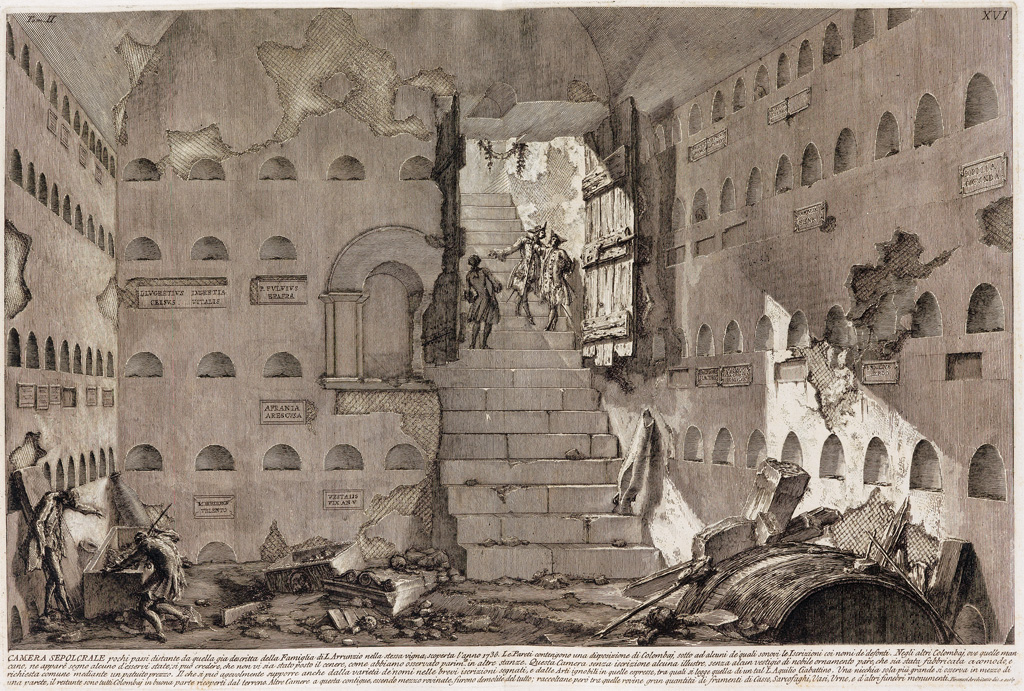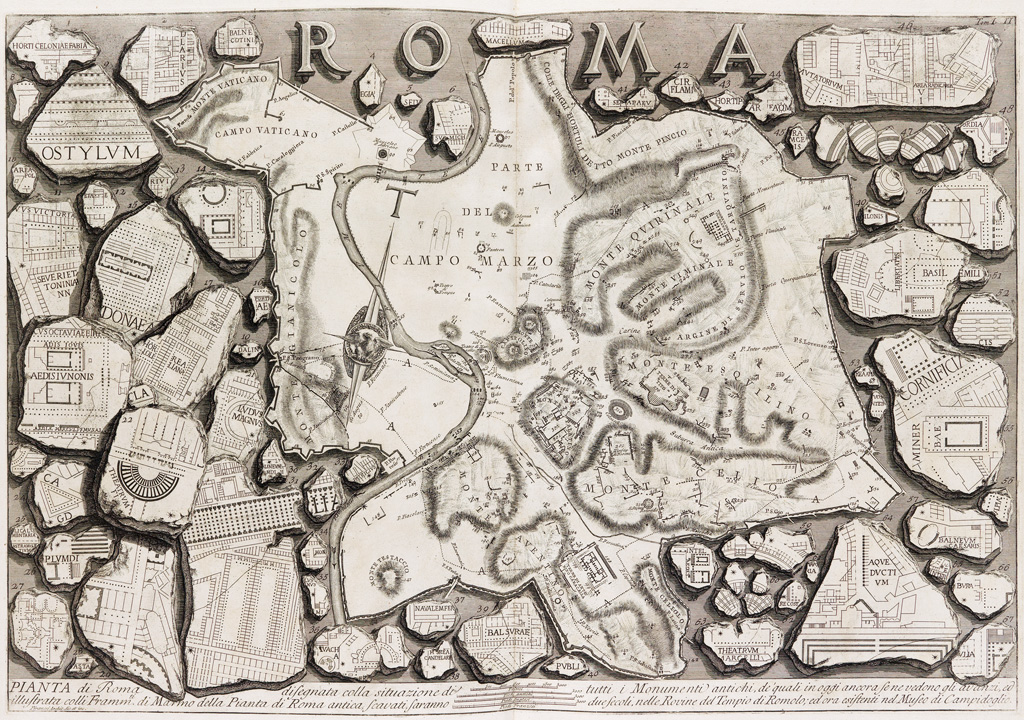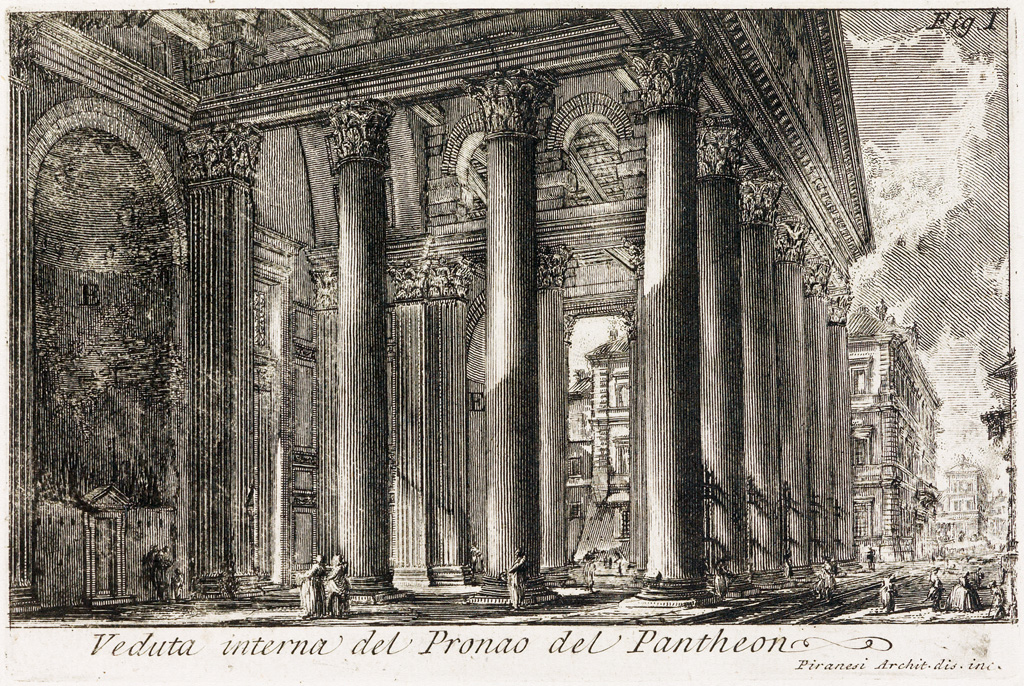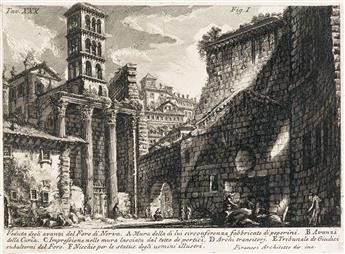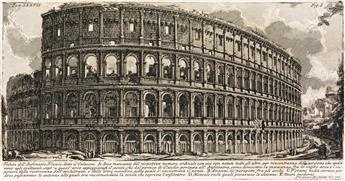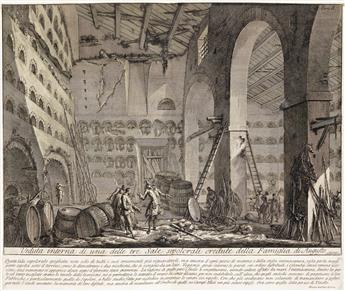Sale 2477 - Lot 196
Price Realized: $ 42,000
Price Realized: $ 52,500
?Final Price Realized includes Buyer’s Premium added to Hammer Price
Estimate: $ 40,000 - $ 60,000
GIOVANNI B. PIRANESI
Le Antichità Romane.
Set of 220 engravings in 4 volumes, many double-page, 1756-84. 535x405 mm; 21x16 inches (sheets), full margins. Second edition. With the engraved portrait of Piranesi by Francesco Piranesi after a drawing by Giuseppe Cades and the engraved dedication page to Gustavus III, King of Sweden. Early paste board and 1/4-calf bindings. Superb impressions throughout; exceedingly scarce as a complete set.
This work, which required eight years of careful study and excavation by Piranesi (1720-1778), established his reputation as the leading protagonist of Roman archaeology when it first appeared in 1756. His aim, as with all his archeological publications, was both to record the vanishing past for scholars and to inspire contemporary designers to emulate the achievements of ancient Rome. Volume I explains the urban structure of ancient Rome in terms of its walls, defences and aqueducts as well as its public monuments. Volumes II and III include the plans of the Camera Sepolcrali, and are devoted to the extensive remains of sepulchres around Rome. Volume IV concentrates on the heroic feats of Roman engineering in the form of bridges and monumental structures such as the Curia Hostilia, the substructure of the Temple of Claudius, Hadrian's mausoleum (the Castel Sant'Angelo), and the Theatre of Marcellus.
Le Antichità Romane.
Set of 220 engravings in 4 volumes, many double-page, 1756-84. 535x405 mm; 21x16 inches (sheets), full margins. Second edition. With the engraved portrait of Piranesi by Francesco Piranesi after a drawing by Giuseppe Cades and the engraved dedication page to Gustavus III, King of Sweden. Early paste board and 1/4-calf bindings. Superb impressions throughout; exceedingly scarce as a complete set.
This work, which required eight years of careful study and excavation by Piranesi (1720-1778), established his reputation as the leading protagonist of Roman archaeology when it first appeared in 1756. His aim, as with all his archeological publications, was both to record the vanishing past for scholars and to inspire contemporary designers to emulate the achievements of ancient Rome. Volume I explains the urban structure of ancient Rome in terms of its walls, defences and aqueducts as well as its public monuments. Volumes II and III include the plans of the Camera Sepolcrali, and are devoted to the extensive remains of sepulchres around Rome. Volume IV concentrates on the heroic feats of Roman engineering in the form of bridges and monumental structures such as the Curia Hostilia, the substructure of the Temple of Claudius, Hadrian's mausoleum (the Castel Sant'Angelo), and the Theatre of Marcellus.
Exhibition Hours
Exhibition Hours
Aliquam vulputate ornare congue. Vestibulum maximus, libero in placerat faucibus, risus nisl molestie massa, ut maximus metus lectus vel lorem.


















